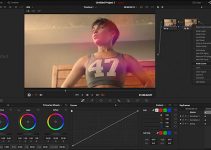Keeping focus while filming a subject in motion could be a very challenging and daunting task even for some seasoned videographers and camera operators. This is especially true if you are short on staff and have to operate in a one-man-band shooting situation, such as in an ENG setup or a run-and-gun production. Of course, you could try to solve this issue by investing into a follow focus system, but still, this setup doesn’t guarantee you success, nevertheless.
Plus, it can not only be time-consuming to set up such a system, but more often than not, it’s utterly impractical for this particular type of shooting situations. So the question stands – how can you keep focus while trying to film a moving subject? Filmmaker Walter Walbeck may have the answers you’re looking for in the video below that showcases a few excellent techniques in that regard.
Before you follow these techniques, one important note to consider is that if you are trying to hold the camera and pull focus at the same time, you’ll want to invest in a rig that will keep your shots steady. This may include a glidecam, a gimbal stabilizer or any other piece of equipment that could potentially complete the task.
One technique to keep your shot in focus while filming a moving subject is to maintain a distance between the camera and the subject throughout the shot. Before you start shooting, determine the length between the subject and the camera. Adjust the focus and then begin recording. Instruct your subject to move and as he/she does so, maintain that distance as best as you can for the duration of the shot. This technique will allow you to avoid having to constantly adjust the focus along the way and pay closer attention to other aspects of your shot such as framing and stability.
Another way to keep your subject in focus is to divide the workload between your hands. In other words, have one hand holding the camera while keeping the other onto the focus ring of your lens for adjustment throughout the shot. This is probably the most common technique but it also yields some inconsistent results if you’re a beginner since you’re having to balance between keeping your camera steady and pulling focus. With a little bit of practice, though, this technique could give you some decent results.
The third technique covered in the video above suggests maintaining focus by using a high aperture. By closing down the f-stop on your lens, more of your image becomes less in focus so that if the distance between the camera and the subject changes often, your subject will still be in focus. Although it’s important to keep in mind that by using a high aperture, you lose the shallow depth of field. You will also have less light entering the camera and hitting the sensor, meaning that you will need to change your settings to compensate for the loss of light.
Lastly, if you’re constantly shooting moving subjects, it may be worth investing in a camera that has a really good autofocus system. Camera companies have recently been creating advancements in their autofocus systems, providing better results and even introduce features like motion tracking. Canon’s Dual Pixel Autofocus, for instance, has been a big selling point for many of the Canon’s high-end cameras since they feature motion tracking, allowing you to target a subject and have the camera follow them around. It’s basically like having a digital focus puller doing your work for you.
Of course, these tips may not all be feasible for your production. Not everyone may have the money to buy a camera with intelligent autofocus, or maybe you can’t afford to increase your pasture to a great extent. Make sure to try out all the tips above and experiment to see which one will suit best your creative workflow.
[source: Parker Walbeck]
Disclaimer: As an Amazon Associate partner and participant in B&H and Adorama Affiliate programmes, we earn a small comission from each purchase made through the affiliate links listed above at no additional cost to you.



